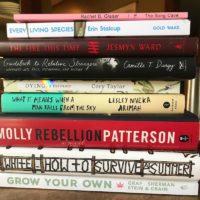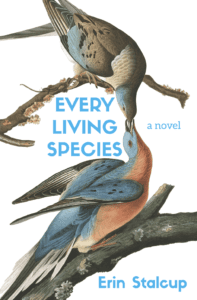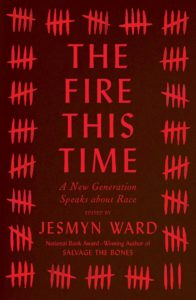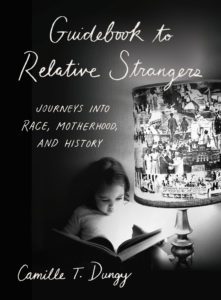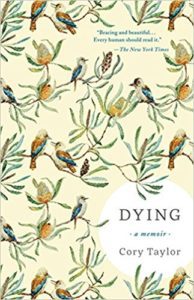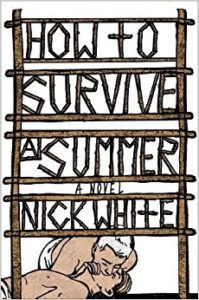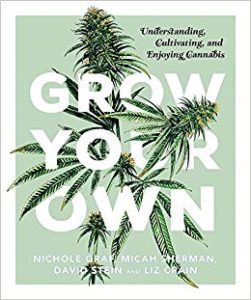It’s been a hell of a year. Here are some recent releases that have helped me through that hell. Each of these books, in various ways, wound the crank on my empathy machine, and reminded me that telling a story can be a defiant act. Rebellion courses through each of these novels, stories, poems, and nonfictions. Pick one up—it might set a fountain of radical hope a-burble inside you.
***
HAIRDO by Rachel B. Glaser
Glaser’s second collection hilariously navigates the daily anxieties and fantasies of the writer’s path through her own modern life. Writing through action movies, pornography, chat rooms, photo shoots on train tracks, crushes on teachers, and orchids in grocery stores, the poems in this book present us with emotional souvenirs of a curious and honest life lived.
Every Living Species by Erin Stalcup
“Bird as beast. Bird as beauty. Bird as spectacle. In Every Living Species, Stalcup looks zoological impoverishment in the eye and refuses to blink. Instead, she turns loss into an exhibition of World’s Fair proportions, concentrating her mad microcosm with biotechnology, infrastructure, art, and humanity. In this world, multiculturalism is as much a revolution as it is a climate change adaptation. In this confluence, I recognize Hitchcock and Hurston, Crichton and Kubler-Ross—and in Stalcup, an aviphile of the highest order.” – Lawrence Lenhart, author of The Well-Stocked and Gilded Cage
The Fire This Time: A New Generation Speaks about Race edited by Jesmyn Ward
Ward takes James Baldwin’s 1963 examination of race in America, The Fire Next Time, as a jumping off point for this groundbreaking collection of essays and poems about race from the most important voices of her generation and our time. The Fire This Time is divided into three parts that shine a light on the darkest corners of our history, wrestle with our current predicament, and envision a better future. Contributors include Carol Anderson, Jericho Brown, Garnette Cadogan, Edwidge Danticat, Rachel Kaadzi Ghansah, Mitchell S. Jackson, Honoree Jeffers, Kima Jones, Kiese Laymon, Daniel Jose Older, Emily Raboteau, Claudia Rankine, Clint Smith, Natasha Trethewey, Wendy S. Walters, Isabel Wilkerson, and Kevin Young.
Guidebook to Relative Strangers: Journeys into Race, Motherhood, and History by Camille T. Dungy
As a working mother whose livelihood as a poet-lecturer depended on travel, Camille Dungy crisscrossed America with her infant, then toddler, intensely aware of how they are seen, not just as mother and child, but as black women. With exceptional candor and grace, Dungy explores our inner and outer worlds―the intimate and vulnerable experiences of raising a child, living with illness, conversing with strangers, and counting on others’ goodwill. Across the nation, she finds fear and trauma, and also mercy, kindness, and community. Penetrating and generous, Guidebook to Relative Strangers is an essential guide for a troubled land.
Dying: A Memoir by Cory Taylor
At the age of sixty, Cory Taylor is dying of melanoma-related brain cancer. Her illness is no longer treatable: she now weighs less than her neighbor’s retriever. As her body weakens, she describes the experience―the vulnerability and strength, the courage and humility, the anger and acceptance―of knowing she will soon die. Written in the space of a few weeks, in a tremendous creative surge, this powerful and beautiful memoir is a clear-eyed account of what dying teaches. Taylor describes the tangle of her feelings, remembers the lives and deaths of her parents, and examines why she would like to be able to choose the circumstances of her death. Taylor’s last words offer a vocabulary for readers to speak about the most difficult thing any of us will face. And while Dying: A Memoir is a deeply affecting meditation on death, it is also a funny and wise tribute to life.
What It Means When a Man Falls from the Sky by Lesley Nneka Arimah
In “Who Will Greet You at Home,” a woman desperate for a child weaves one out of hair, with unsettling results. In “Wild,” a disastrous night out shifts a teenager and her Nigerian cousin onto uneasy common ground. In “The Future Looks Good,” three generations of women are haunted by the ghosts of war, while in “Light,” a father struggles to protect and empower the daughter he loves. And in the title story, in a world ravaged by flood and riven by class, experts have discovered how to “fix the equation of a person”—with rippling, unforeseen repercussions.
Rebellion by Molly Patterson
A sweeping debut that crosses continents and generations, Rebellion tells the story of Addie, Louisa, Hazel, and Juanlan: four women whose rebellions, big and small, are as unexpected as they are unforgettable. Moving from rural Illinois to the far reaches of China, Rebellion brilliantly links through action and consequence the story of four women, spanning more than a century. From the secrets they keep and the adventures they embark on, to the passions that ultimately drive them forward, the characters at the center of this electric debut dramatically fight against expectation in pursuit of their own thrilling fates.
How to Survive a Summer by Nick White
Camp Levi, nestled in the Mississippi countryside, is designed to “cure” young teenage boys of their budding homosexuality. Will Dillard, a Midwestern graduate student, spent a summer at the camp as a teenager, and has since tried to erase the experience from his mind. But when a fellow student alerts him that a slasher movie based on the camp is being released, he is forced to confront his troubled history and possible culpability in the death of a fellow camper. As past and present are woven together, Will recounts his “rehabilitation,” eventually returning to the abandoned campgrounds to solve the mysteries of that pivotal summer, and to reclaim his story from those who have stolen it.
Grow Your Own: Understanding, Cultivating, and Enjoying Cannabis by Nichole Graf, Micah Sherman, David Stein, and Liz Crain
As prohibition wanes, and cannabis aficionados of all stripes come out from the shadows, the old stereotypes are fading. The benefits of cannabis are undeniable―medicinally, sure, but also for stress, for creativity, and for relaxation. And as any homebrewer, winemaker, or backyard gardener can tell you, there’s a particular joy in doing it yourself.
